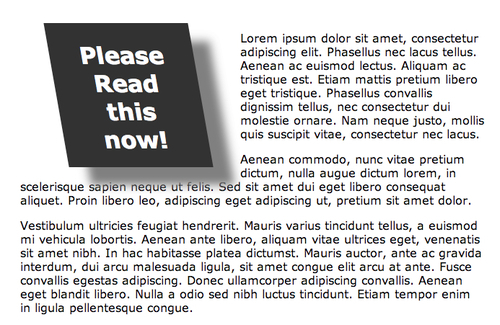CSS3 effects such as shadows, rounded corners, and opacity can make web pages more stylish, less harsh, and more welcoming. Used with discretion (that is, not overused), they give web pages that nice je ne sais quoi that visitors can't exactly put their finger on, but that make their experience at a web page more intriguing and positive.
Effects and transforms can be, and often should be combined to produce eye-catching elements. For example, the following text, has both a skew transform and a shadow (box-shadow) effect applied.

Transitions, such as skewing, rotation, scaling, and translation (moving) objects are particularly engaging when combined with interactivity. For example, a visitor to a website who hovers over an object experiences a subtle but inviting change in it.
In the pre-CSS3 era, these kinds of effects or transitions required some combination coding, and embedding Flash objects, relied on (and programming with) JavaScript, substituting images...



